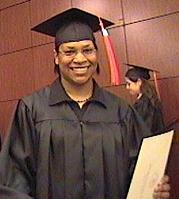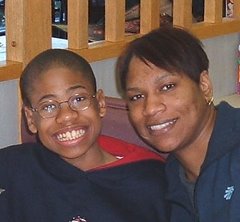By Dan Olmsted in Science Daily for United Press International.
http://tinyurl.com/77ykp
Part 1 of 2. Regular readers of this column (and we thank you) know that we value a back-and-forth approach. Since beginning this open-ended series six months ago, we have paused several times to let readers speak, and our direction has been shaped by their responses.
Lately, we have been pursuing the vaccine question, unable to satisfy ourselves the case is completely closed on whether the mercury-based preservative called thimerosal triggered a sharp rise in autism diagnoses in the 1990s. Partly, that is due to our own research among two populations --homeschoolers who do not vaccinate their children, and particularly the Amish, who have a religious exemption from the mandatory childhood-vaccine schedule.
While acknowledging our limitations, we've stated the facts as we found them -- little evidence of autism, certainly nowhere near the 1-in-166 rate diagnosed in the rest of the population.
This has led some readers to suspect our mind is made up, whereas we view it as wide open. If better minds than ours would simply (and quickly) study the rate of autism in such populations -- a task that to date has been oddly omitted from the millions in grants and thousands of studies on autism-- we think the matter could be brought to a decisive conclusion.
If never-vaccinated children have the same rate of autism as everyone else, isn't the case closed? Your honor, we are willing to stipulate that it is.
Another reason we keep talking about vaccines is ... that is what so many parents of autistic children talk about when they get in touch with us. We have in fact formed one conclusion: It is important to listen to what parents say about their own children. This is a widely accepted concept --but honored in the breach when it comes to much of the mainstream media's coverage of autism.
Strangely, "Father Knows Best" applies metaphorically more than factually: Paternalistic medical experts and scientific bodies evoke godlike awe in much of the media, whereas real-life fathers and mothers get the brushoff. Yet the mainstream media's role is to present all sides and -- if they have any agenda at all -- to question authority, not comfort it.
That was our point in critiquing an article in The New York Times last month, headlined "On Autism's Cause, It's Parents vs. Research." Because the Times' front page sets the agenda for so much of the media, how it treats controversial topics matters inordinately.
The article clearly and unapologetically gave more weight to a select group of scientific studies -- "research" -- than to parents who doubt that research. That is not necessarily a problem, but why do parents doubt that research? Because, in many cases, they think they witnessed a vaccine reaction that left their child autistic. Of course, that proves nothing; the well-established principle is temporal association cannot establish causality. True enough, but being shot with a gun and dropping dead are widely viewed as associated both temporally and causally, absent compelling proof to the contrary. Some parents consider the association between immunizations and autism about that clear -- at least when it pertains to their child. That does not mean they are right, but it suggests they should be heard in enough detail for the reader to decide whether they are making any sense. That was our problem with the Times' piece. Where were the parents' accounts of what they saw and believed, accounts that might explain their objections to research that says otherwise? Nowhere.
Of course, not every parent thinks he or she has witnessed a link between vaccination and their child's autism. Many if not most reject the idea entirely, but "the literature" -- my inbox being one example -- is full of just such striking accounts. You cannot write about why parents object to research clearing vaccines as a cause of autism without addressing that. The Times did.
Those who have complained about the Times' story have heard from the newspaper's Public Editor Byron Calame. Here, verbatim, is what he told representatives of the group A-CHAMP: I have carefully reviewed your e-mail and spent several hours with the editors and reporters who prepared the article, who have provided me with explanations and information to answer the questions your e-mail raised in my mind.
This has left me convinced that the article isn't intellectually dishonest. Nor are the omissions staggering. Nor is there a pervasive editorial bias. I find the article fair and accurate, even though I understand why it could disappointment a group such as yours with its strong point of view on the controversy that surrounds autism today.
It seems to me you may have a misconception of what The Times regards as fairness and balance in an article. There's a general obligation to listen to all sides in a controversial situation, which I think the reporters clearly did in this case. But when it comes time to write the article, it doesn't necessarily mean 20 inches for one side and 20 inches for the other. I find your concern that all the documents and communications you provided to the reporters didn't get into the article a possible reflection of this numbers-oriented perception of balance.
Readers of The Times expect to get the most meaningful and significant information presented in the most efficient way possible. The Times expects its reporters and editors to work hard and smart to gather a lot of information -- and select the information that is the most meaningful and significant to put in their articles.
All studies and documents aren't of equal value, so they don't necessarily deserve an equal amount of space in a Times article. The reporters were aware of the three government reports or sets of recommendations you cited and had decided -- correctly, it seems to me --that they didn't merit inclusion in the article.
As for your request for a meeting, I would be willing to meet in person or on a conference call with up to three representatives of A-CHAMP for 45 minutes on a mutually agreeable date in August. I have requests for meetings from two other groups, which I would intend to schedule for the same day.
Whatever you may think of the Times story, it is interesting to hear a complete, cogent defense of it, wouldn't you agree? We respectfully suggest that was the Times' fundamental lapse -- not presenting enough of the "vs." argument to let readers form their own conclusion about the parents' case or how they came to believe it.
That is what we propose to do in Part 2 of this discussion: let the parent of an autistic child, a parent quoted in bits and bites in the Times piece, speak for herself. Verbatim. In toto. At length.
You can decide what to make of it. And we will print what you say.
E-mail: dolmsted@upi.com
Reprinted here with permission.
For more information and resources on autism, go to:
http://www.autismconcepts.com/.
Forget what you haven't heard… Family site shares news, resources, announcements and free or low-cost ways to help us manage day-to-day living with autism.
Crystal Brown

About Me

- Crystal
- AutismConcepts.com and Child-Autism-Parent-Cafe.com share a large collection of useful autism information, resources, and how-to articles written by authors who are touched by autism, offering practical solutions to families. Particularly minority and underserved families and caregivers who may not know what to do or where to go for help.
MJ And Me

Blog Archive
-
▼
2005
(194)
-
▼
July
(28)
- Autism - Cut The Crap
- Boys Take Stand In T-Ball Case
- T-ball victim invited to Oakland A's game
- Scientists Advance Understanding of the Role of a ...
- Study reveals parents' MMR views BBC News
- Study: Children with Autism Have Distinctly Differ...
- Tee-ball coach charged in assault
- Special education goes home
- A Kennedy Fuels Autism Debate
- Free Kids and Teens Printable Coloring Pages
- Study Finds Industrial Pollution Begins in the Womb
- Toxic elements found in infants' cord blood
- Parents use alternative method to treat daughter's...
- Should I Vaccinate My Child?
- GAO Report - Child Welfare: Better Data and Evalua...
- Autism, Mercury and the California Numbers
- Study: Positive touch, the implications for parent...
- The Age of Autism: Both Sides Now
- Number of Autism Cases Declines in Calif.
- What is MTHFR Mutation? - Toward Understanding the...
- Mistrust rises with autism rate
- Autism drug cuts aggression
- Autism, mercury, and politics by Robert Kennedy Jr.
- The Age of Autism: Dismaying 'Times'
- CODEX Threat to Supplement Market
- Vaccine tie to autism gains new supporters
- Study: New model may better predict outcomes for c...
- Study questions extent of autism in the U.S.
-
▼
July
(28)